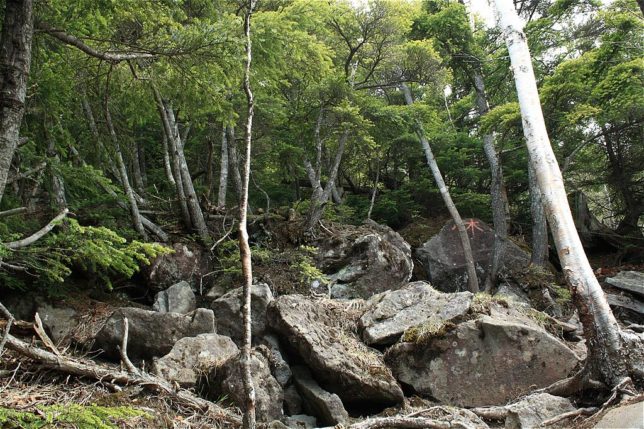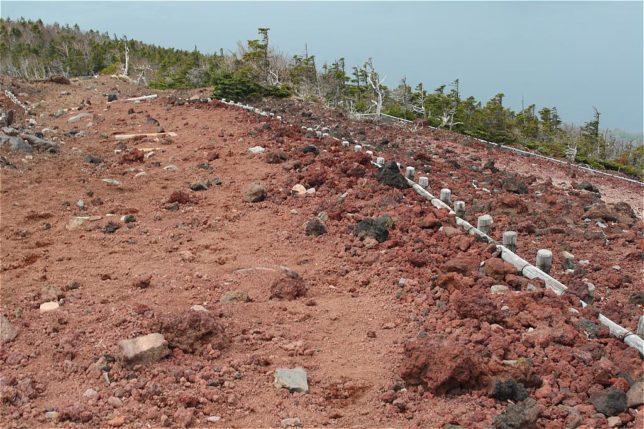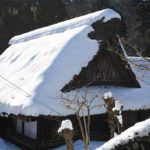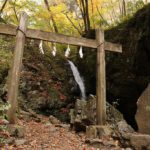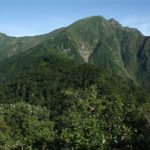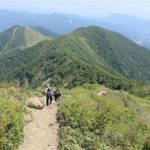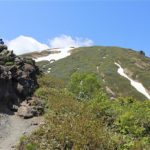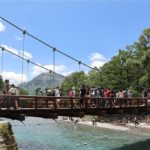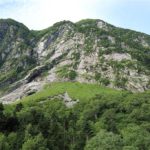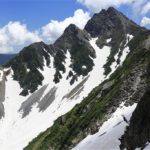Introduction
Mt. Shirouma (or Mt. Hakuba, 白馬岳) is a popular mountain in Kita Alps (Hida Mountains) area. The name “Shirouma” means “white horse”. The mountain locates near global ski resort : Hakuba where Olympic was held in 1998.
During the winter, mountains are covered with deep snow. The snow remains until summer, resulting in a beautiful mountain landscape and abundant flora.
Mountain Data
Mt. Shirouma (白馬岳)
- Elevation : 2932 m
- Location : Nagano Pref. (長野県)/ Toyama Pref. (富山県)
- Belongs to Kita Alps (北アルプス, Alias : Northern Alps, Hida Mountains)
- Belongs to Chubu-sangaku National Park (中部山岳国立公園)
- Non-volcanic
- One of the “100 Famous Japanese Mountains”

Map
Example Plan
| Day 1 | Tokyo – Nagano St. – Hakuba St. – Sarukura B.T. (Transport by train and bus) 東京 – 長野駅 – 白馬駅 – 猿倉バス停 | 4 hours |
| Sarukura B.T. – Hakuba-jiri Goya 猿倉バス停 – 白馬尻小屋 | 1 hour | |
| Day 2 | Hakuba-jiri – Daisekkei – Chojo Shukusha 白馬尻 – 大雪渓 – 頂上宿舎 | 5 hours |
| Day 3 | Chojo-shukusha – Mt.Shirouma – Hakuba-oike Sanso – Tsugaike Wetland 頂上宿舎 – 白馬岳 – 白馬大池山荘 – 栂池自然園 | 6 hours |
| Tsugaike Wetland – Tsugaike-kogen Bus Terminal (Using ropeway) 栂池自然園 – 栂池高原バスターミナル | 0.5 hours | |
| Tsugaike-kogen – Nagano St. – Tokyo (Transport by train and bus) 栂池高原 – 長野駅 – 東京 | 4 hours |
Course Guide
Sarukura (猿倉) – Hakuba-jiri Goya (白馬尻小屋)
Most of this section is a flat gravel road. It takes about 1 hour to get to Hakuba-jiri Goya Hut and campsite.

Hakuba-jiri Goya (白馬尻小屋) – Daisekkei (大雪渓) – Chojo Shukusha (頂上宿舎)
Climb the slope with an altitude difference of 1200 m. About half of the trail is covered with year-around snow called Daisekkei(大雪渓), so you must walk on the snow even in summer. On Daisekkei, the view is great, but there is also dangerous. Be careful of falling rocks and slipping. Falling rocks may not make any sound on the snow so watch ahead carefully. You must wear crampons to prevent slipping.

After passing Daisekkei, there is a field of flowers. You can find many kinds of flowers.

After 5 hours walk from Hakuba-jiri, there is a mountain hut : “Chojo Shukusha” at the ridge. From here, the summit is right there. If you have time, why not go?

Chojo-shukusha (頂上宿舎) – Mt. Shirouma (白馬岳)
From Chojo Shukusha, about 30 minute walk lead to the summit. At the summit, you can see Tateyama mountains (立山連峰) and other Kita Alps mountains in southeast.

Mt. Shirouma (白馬岳) – Hakuba-oike (白馬大池)
This section is a 2400-2900m ridge-line trail with nice view. The ridge is covered with gravel and sand. There are no tall trees due to high altitude and severe climate.
There is not dangerous places, but be careful not to get lost especially in bad weather.

Hakuba-oike is a small and transparent lake. There is a mountain hut and campsite on the lake shore.

Hakuba-oike (白馬大池) – Tsugaike Wetland (栂池自然園)
The trail after Hakuba-oike is almost downhill except for Mt. Norikura (乗鞍岳). Mt. Norikura is a gentle mountain like a hill. The best spot for lunch.

The section between Mt. Norikura and Tsugaike is a coniferous forest. There are two wetlands : Tenguppara (天狗原) and Tsugaike (栂池) . Tsugaike wetland, the end point of this trekking course, is a popular place for day hikers. A lot of flowers bloom in summer.
From Tsugaike wetland, you can use two rope-ways to go to Tsugaike-kogen (栂池高原) bus terminal.
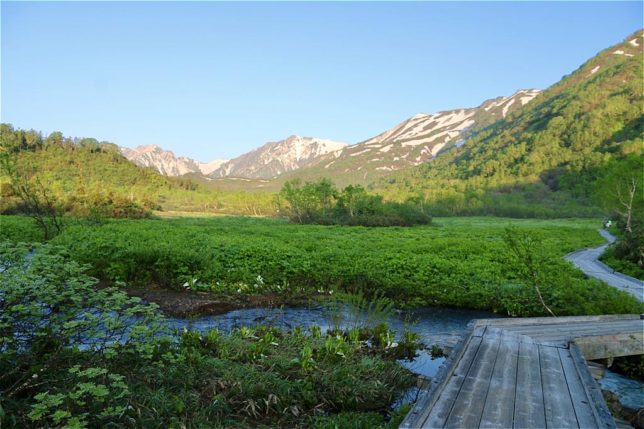
Season
Best season is Middle July – Early September.
| Jan. – Mar. | Heavy snow and blizzard |
| Apr. – Early July | Covered with deep snow |
| Mid July – Early Sep. | Sunny and warm, Many flowers |
| Mid Sep – Early Oct. | Cold and sometimes snow, Autumn leaves |
| Mid Oct. – Dec. | Snow fall |
Accommodations
Day 1 : Hakuba-jiri Goya hut and campsite
Day 2 : Chojo Shukusha lodge and campsite
For details, check this page : Shirouma Mountains Area Huts Information
Access
From Tokyo to Nagano
JR Hokuriku Shinkansen. About 1.5 hours.
From Nagoya to Nagano
JR Wide-view Shinano Express (特急しなの). About 3 hours.
From Nagano to trail-heads
Nagano St. – JR Hakuba St. or Tsugaike-Kogen B.T.
ALPICO bus bound for Tsugaike-kogen (栂池高原) or for Hakuba-Norikura (白馬乗鞍). About 1.5 hours.
JR Hakuba St. – Sarukura B.T.
ALPICO bus bound for Sarukura. About 30 minutes.
For details, check ALPICO bus website – Hakuba Area.


